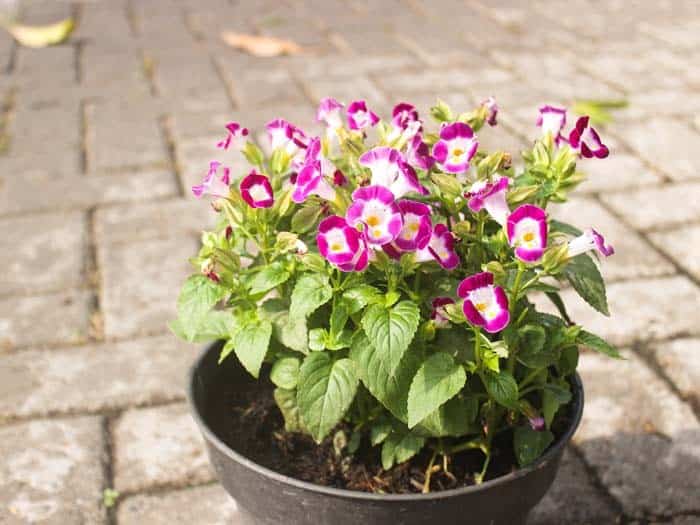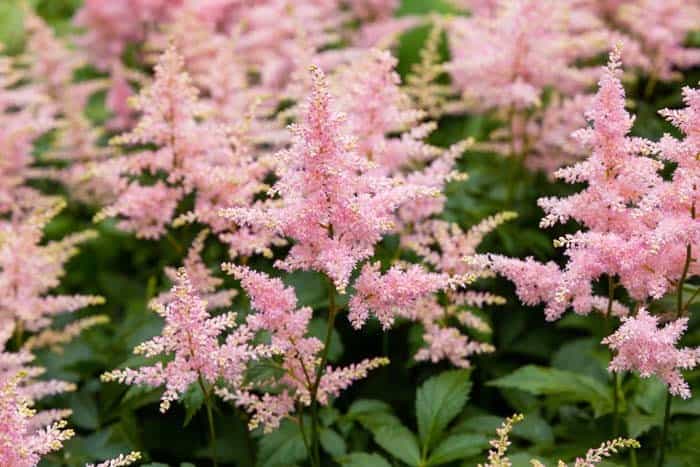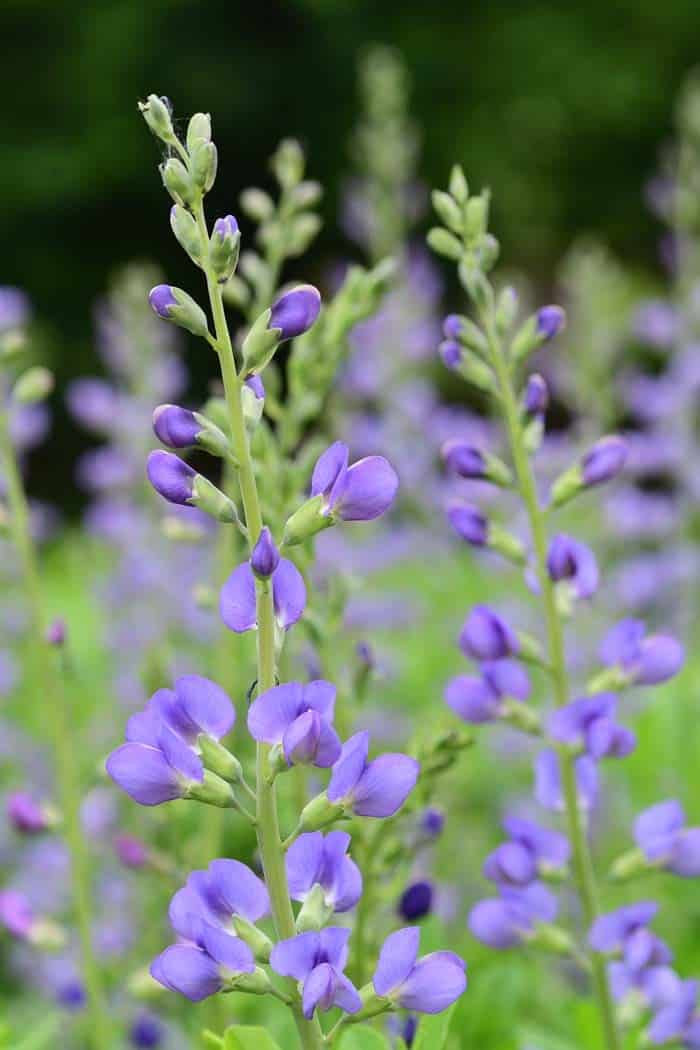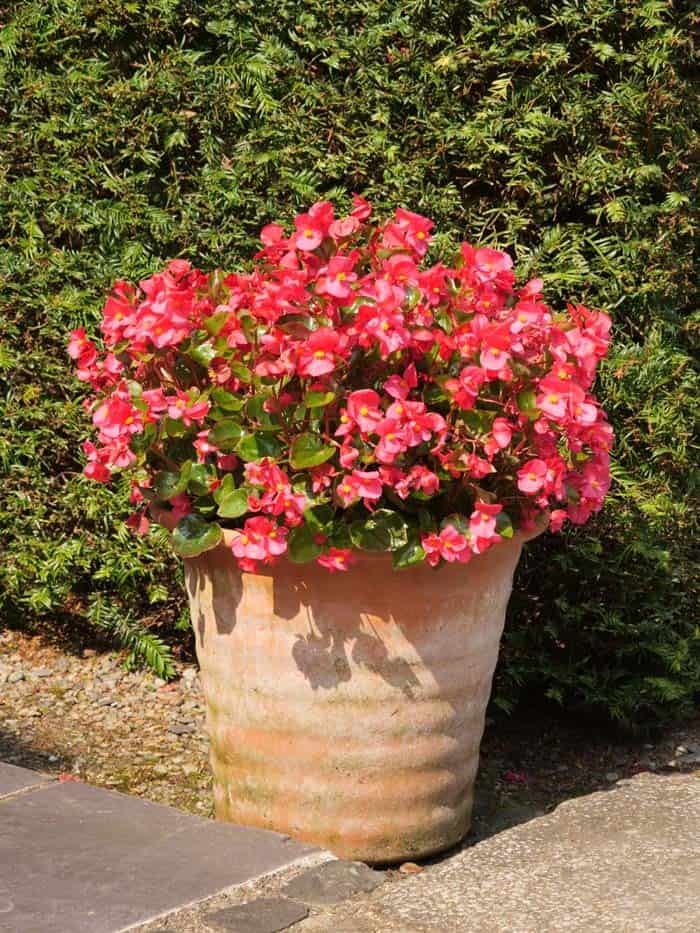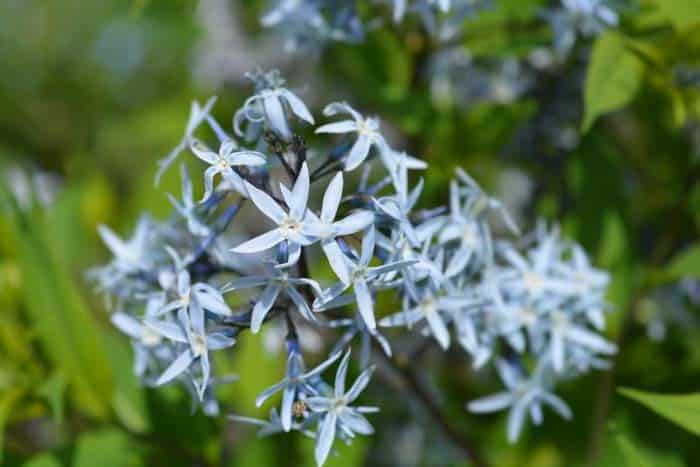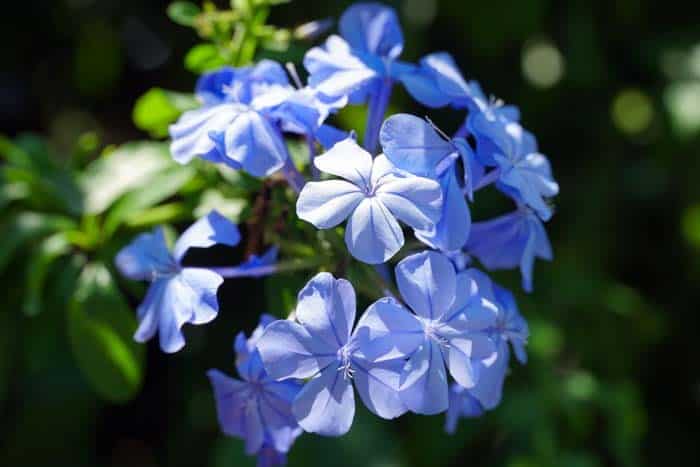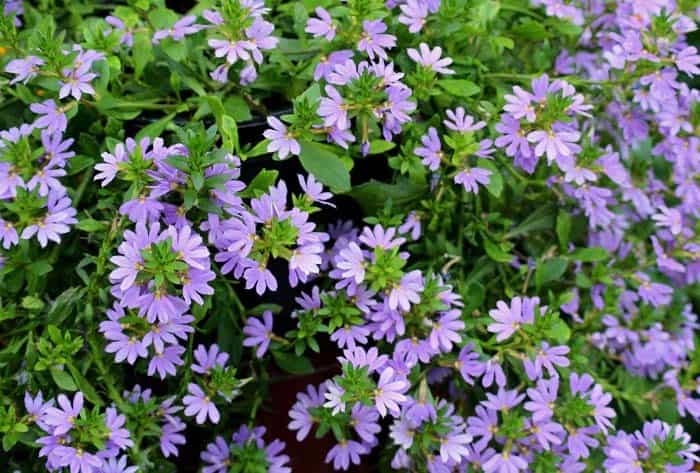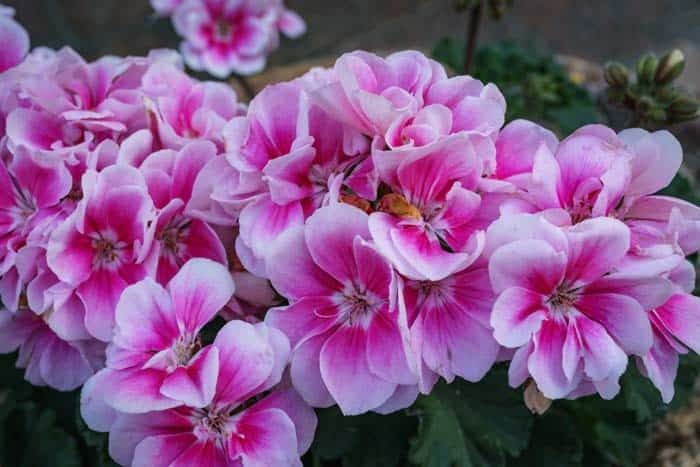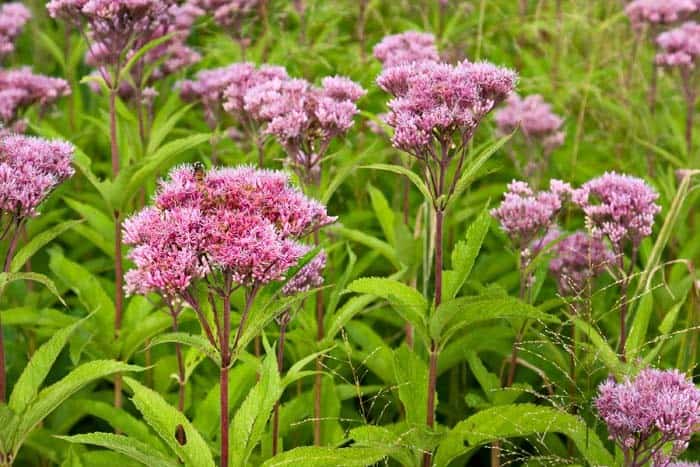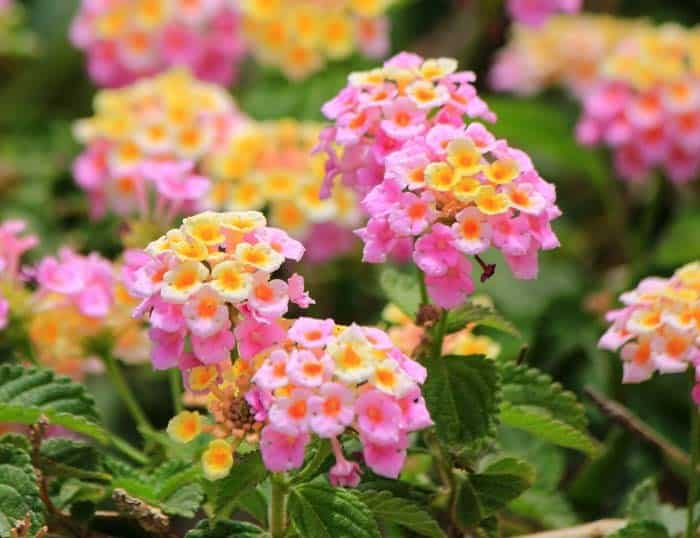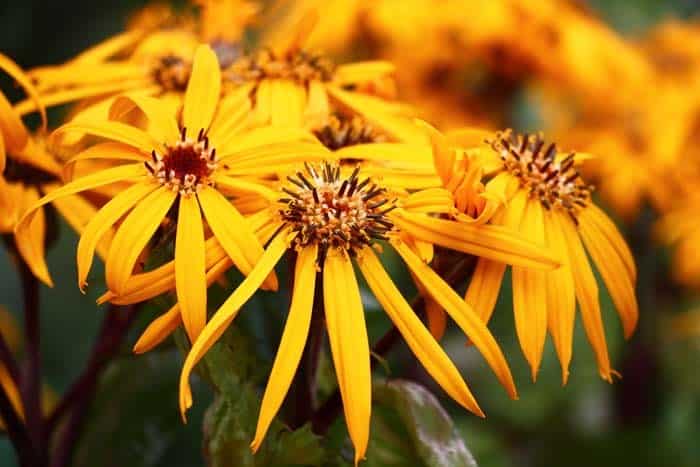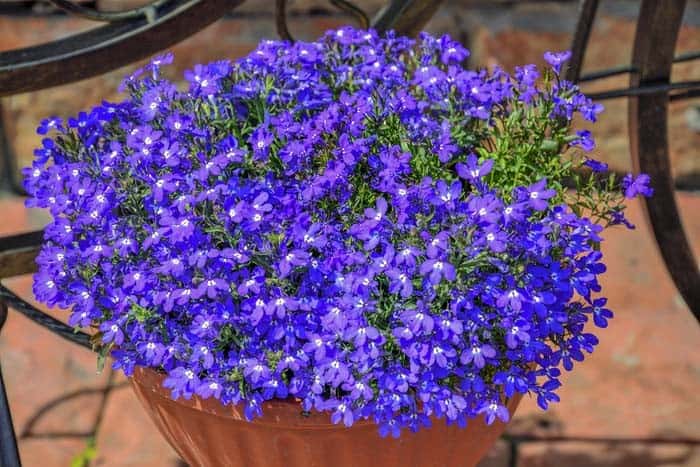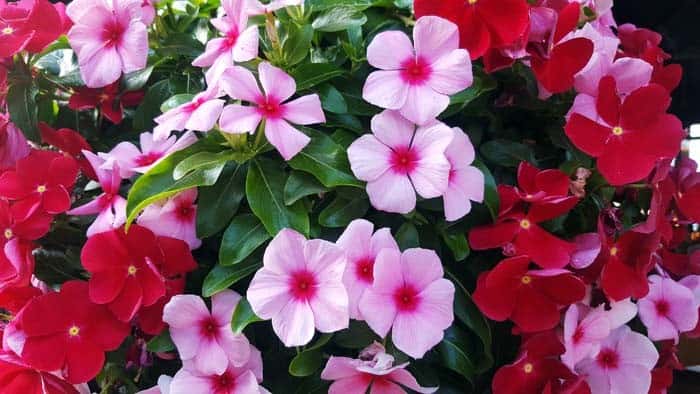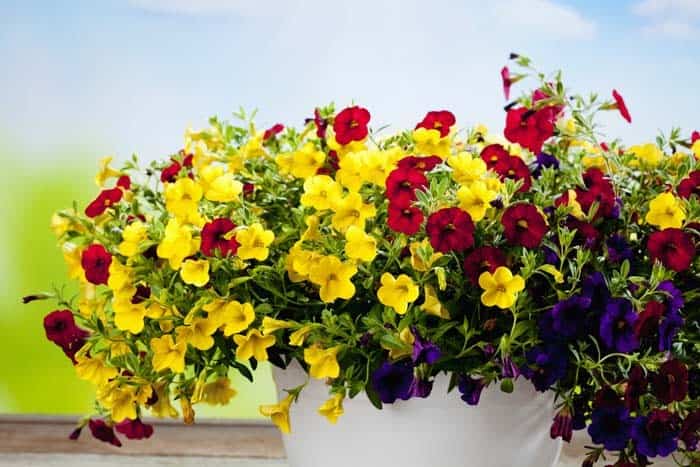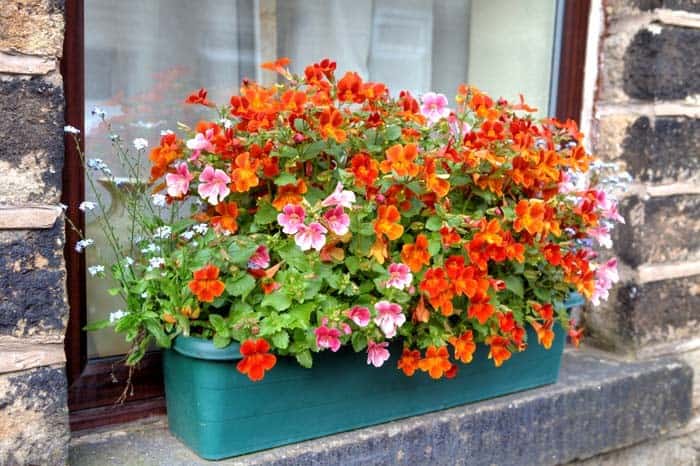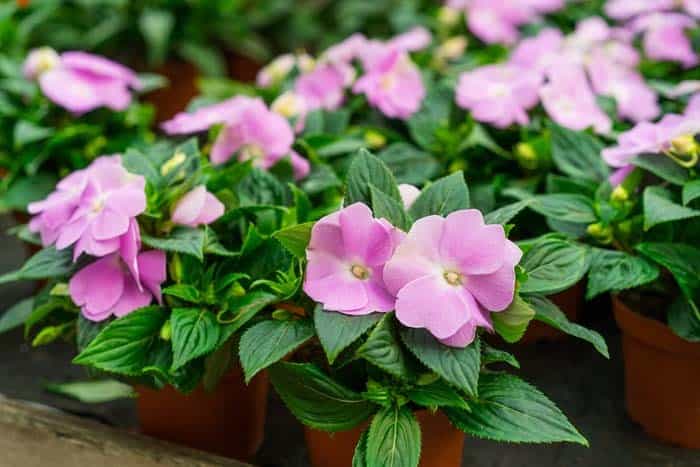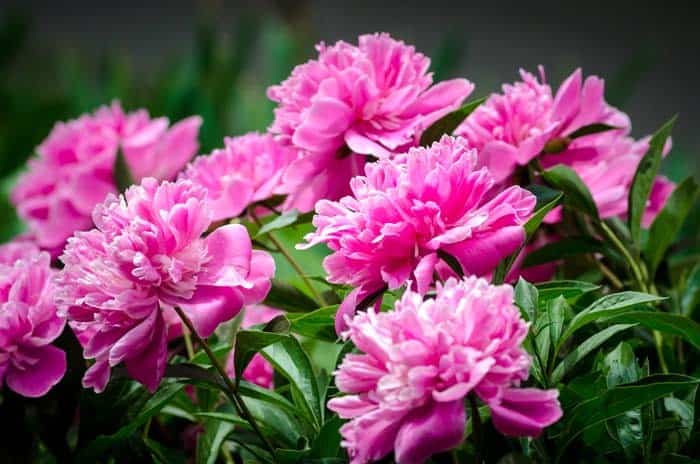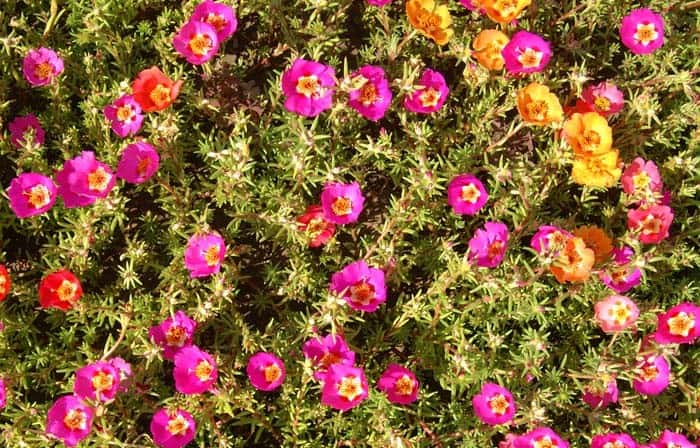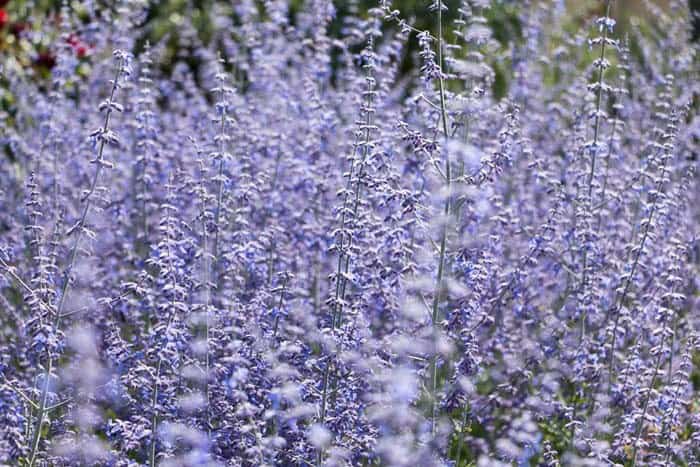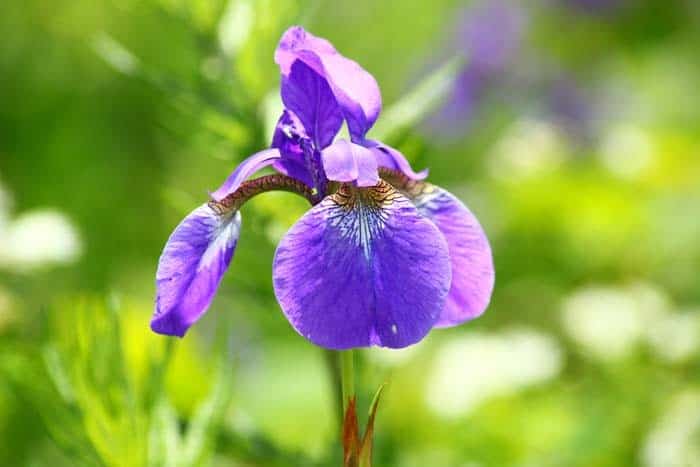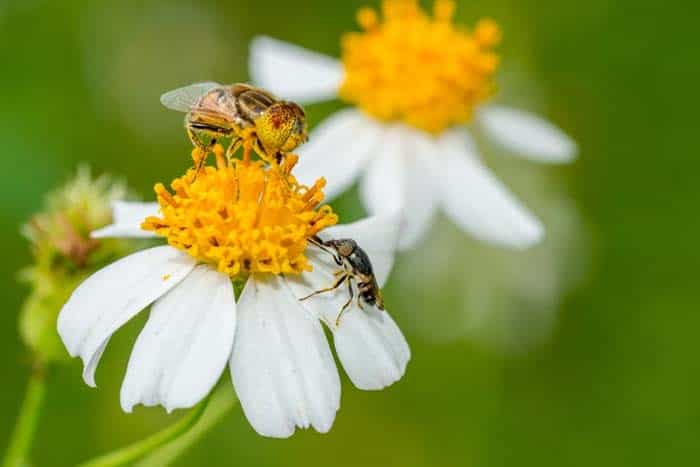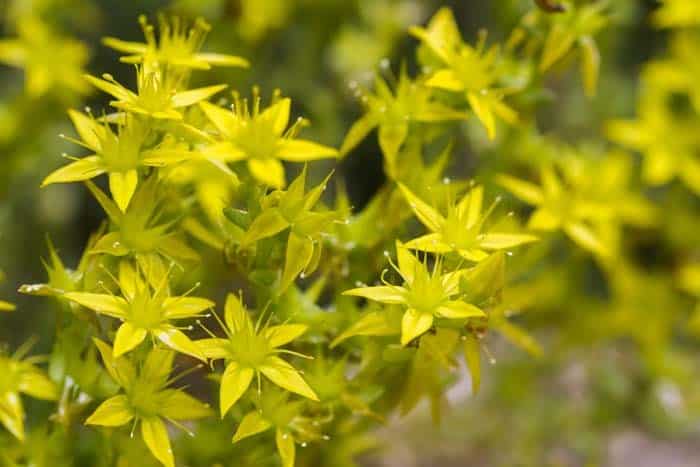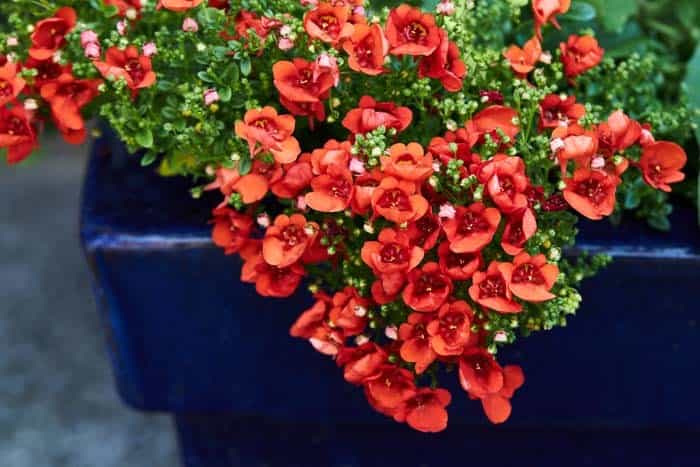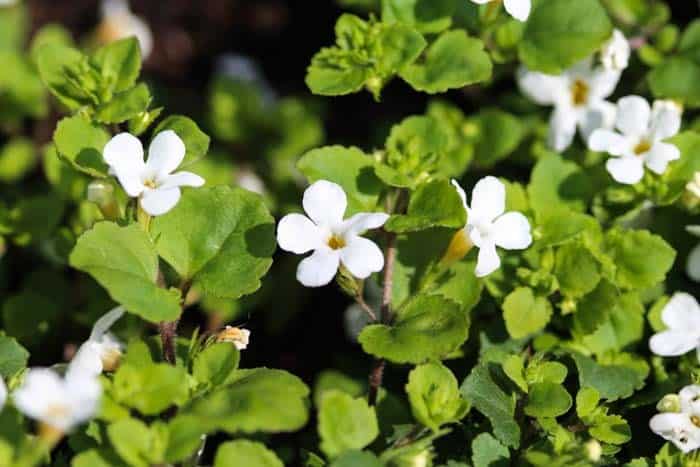Flowering gardens can be a labor-intensive endeavor, especially when it comes to deadheading. While this task may seem like a mere cosmetic concern, it’s essential for many plant species to thrive. However, if you’re looking to minimize your gardening responsibilities, there are plenty of flowering plants that don’t require deadheading. Some species, such as marigolds, rely heavily on this process to produce seeds and will not rebloom without it.
On the other hand, certain varieties of roses and petunias may not need regular deadheading. To determine whether you need to deadhead your petunias or rose bush, carefully research the specific species to learn if they’re self-cleaning or require maintenance. After researching extensively, we’ve identified twenty-five flowers that don’t necessitate deadheading. Starting your garden with these low-maintenance blooms will save you time and effort in the long run.
Angelonia ( Angelonia )
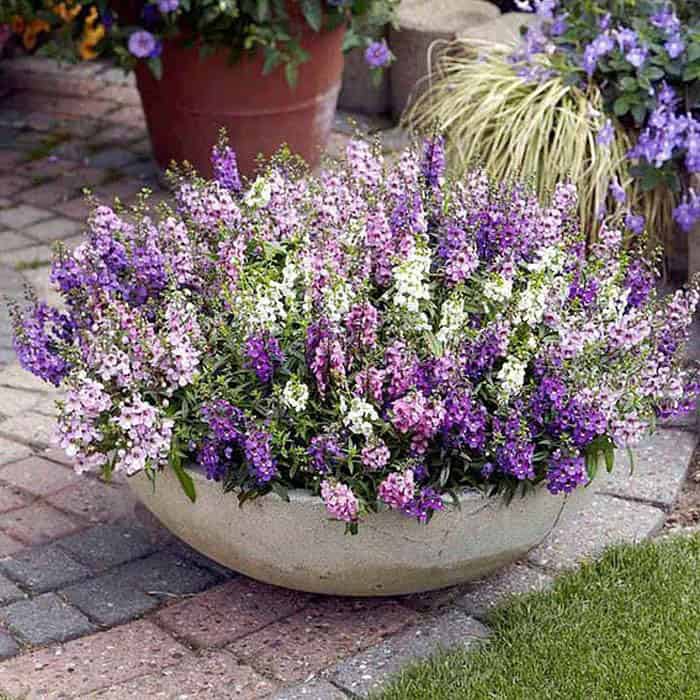
While snapdragons are often associated with cooler climates, Angelonia is uniquely adapted to thrive in hot temperatures, boasting an extended growing season that continues until the first frost of fall. This remarkable plant can provide continuous color and beauty to your garden throughout the year. Its straight-growing habit makes it easy to cultivate and maintain.
Interestingly, when older flowers fade and go to seed, new blooms will emerge from areas of new growth, creating a perpetual display of vibrant colors. As a low-maintenance option, Angelonia is an excellent choice for beginner gardeners looking to add some visual interest to their outdoor spaces.
Astilbe ( Astilbe )
With their delicate, fern-like foliage and flower stalks adorned with feathery plumes, Astilbes are a sight to behold. This charming plant comes in a range of colors, including vibrant reds, soft pinks, calming lavenders, and pure whites – the latter being particularly popular for its ‘bridal veil’ appearance. As they thrive in zones three through eight, Astilbes require careful consideration when selecting a location.
Ideally, they should be planted in total or partial shade, allowing them to flourish under the right conditions. When provided with suitable surroundings, the blossoms of an Astilbe can last for up to four weeks, treating you to a prolonged display of beauty.
Baptisia Australis ( Baptisia Australis )
The wildflower’s subtle charm lies not only in its delicate bluish-purple blossoms, but also in the intriguing details hidden beneath its unassuming stems. Resembling pea shoots, these stems belie the surprise that awaits when the flowers bloom. As autumn’s cooler temperatures arrive, it’s tempting to tidy up by removing dead blooms.
However, refrain from doing so, as this allows the pods to dry out and release their seeds, producing a unique sonic experience akin to nature’s own rhythmic performance. The gentle rattling of the seeds within these pods is an enchanting reminder of the beauty found in even the smallest, most overlooked aspects of our natural world.
Begonias ( Begonia )
Begonias are typically partial shade dwellers, and direct sunlight all day can be detrimental to their growth. Most begonia varieties are self-cleaning, with new blooms emerging to replace those that have fallen off. However, if you’re looking to stimulate additional flowering, a simple technique can help. By removing the smaller female bloom situated behind the male bloom, you’ll redirect energy back into the plant, encouraging it to produce more flowers.
No scissors required – simply twist and remove the unwanted bloom, allowing your begonia to flourish.
Blue Star ( Amsonia Tabernaemontana )
The Blue Star perennial boasts a unique floral transformation, where its delicate blue petals gradually shift to a warm golden hue during the autumn season. With this natural display, there’s no need for pruning or deadheading – simply let nature take its course and enjoy the captivating show.
Bush Violet ( Browallia Speciosa )
Browallia speciosa, a perennial flower that truly lives up to its name by producing vibrant violet blooms. This plant hails from South America, where it has thrived in its natural habitat for centuries.
Fan Flower ( Scaevola )
When it comes to sheer vibrancy, the Fan Flower is hard to top. Its blooms boast a stunning array of white, blue, and purple hues that are sure to brighten up any garden space. However, it’s worth noting that this beauty can be quite the spreader, so consider potting it to keep its growth in check. As an Australian native, Fan Flowers are incredibly resilient, thriving even in sweltering temperatures that would leave many plants wilting.
For those living in colder climates, the Fan Flower is typically grown as an annual, while those in temperate zones can enjoy its perennial charm.
Impatiens ( Impatiens Walleriana )
With over 500 varieties to its name, Impatiens Walleriana, commonly referred to as Impatiens, is a stunning perennial that thrives in shaded environments. Its flowers come in an array of vibrant hues, offering a kaleidoscope of color options for garden enthusiasts.
Joe Pye Weed ( Eupatorium Maculatum )
Adding Joe Pye Weed to your pond or butterfly garden can be a wonderful idea, as it’s a hardy perennial that thrives in full sun and partial shade. Its adaptability is one of its greatest strengths, making it suitable for growth in USDA Zones 4 through 8. What’s more, this versatile plant comes in a stunning array of colors, typically reaching heights of around four feet.
One of its most attractive features is the self-cleaning blooms that emerge in early fall, providing a vibrant display of color during the autumn season.
Lantana ( Lantana Camara )
The summer-blooming beauty is a standout feature of this plant. Its vibrant display typically peaks around July and lingers until September. Moreover, its remarkable drought tolerance makes it an excellent choice for ground cover in arid climates. Interestingly, these flowers don’t require deadheading, but a dash of fertilizer can coax even more blooms from them.
Leopard Plant ( (Ligularia Dentata )
The Leopard plant stands out with its daisy-like appearance, characterized by spotted leaves that add a touch of uniqueness to any garden setting. One of the notable features of this perennial is its ability to maintain its visual appeal without requiring deadheading, making it a low-maintenance option for homeowners. Additionally, these plants tend to flourish in damp environments and can be easily paired with hostas to create a stunning display of foliage.
Lobelia ( Lobelia Erinus )
Characterized by their dainty, yet vibrant flowers, Lobelia boasts an array of colors including pure white, rich purple, and soft pink hues. This versatile flowering plant is available in both trailing and upright forms, offering gardeners a range of creative options for adding visual interest to their outdoor spaces.
While they do require some initial care and attention, Lobelia plants are relatively low maintenance once established, as the spent blooms drop off naturally without the need for frequent deadheading.
Madagascar Periwinkle ( Catharanthus Roseus )
In the Indian landscape, the Madagascar periwinkle is a ubiquitous shrub that can be found thriving in various environments. Measuring between 1 to 3 feet in height, this versatile plant boasts an impressive array of colors, including striking blues, vibrant violets, soft pinks, and pure whites. Notably, its medicinal properties have made it a popular choice for cultivation, allowing gardeners to reap the benefits of its self-cleaning annual blooms that burst forth throughout the summer months.
Million Bells ( Calibrachoa )
Plant Million Bells in full sun, where they thrive and produce an abundance of vibrant blooms along their trailing stems. This compact variety matures at a height and width of 6 to 12 inches, making it an ideal choice for containers or hanging baskets. While pinching back the tips can help encourage bushier growth, this step is entirely optional – simply allow the plant to grow naturally if you prefer.
As an added bonus, the seed pods that form on mature plants can be collected and saved for replanting in future seasons.
Nemesia ( Nemesia )
This beautiful, self-cleaning perennial plant is often cultivated as an annual. While not requiring the laborious task of dead-heading, occasional pruning can be beneficial in maintaining its desired shape. The flexibility to grow it in a pot near a sunny window allows you to bring a touch of nature indoors and enjoy a delightful bouquet.
New Guinea Impatiens ( Impatiens Hawkeri )
A key advantage of growing New Guinea impatiens is their adaptability to varying light conditions. They can thrive in environments ranging from direct sunlight to complete shade, making them an excellent choice for areas with unpredictable weather patterns or those seeking a low-maintenance ornamental. Additionally, these perennials do not require the routine task of deadheading, simplifying the gardening process.
Peony ( Paeonia )
Peonies are known for their long-lasting blooms, thriving in gardens for years after establishment. The beauty of these flowers lies not only in their vibrant colors but also in their adaptability, as they come in a wide range of hues to suit every garden’s unique style. To encourage optimal growth, Peonies require full sun, with at least six to eight hours of direct sunlight per day.
When it comes to maintenance, deadheading is an optional practice that allows you to dictate the direction of your Peony’s energy. If you choose to deadhead, the plant will redirect its focus towards developing a stronger root system. Ultimately, the decision to deadhead depends on your personal preference and the aesthetic appeal you desire for your garden.
Purslane ( Portulaca Oleracea )
Purslane, an oft-maligned herb, plays a dual role as both a nuisance weed and a nutrient-rich superfood. Its versatility allows it to thrive as a ground cover, requiring only 4-6 hours of direct sunlight to flourish. One of its most appealing characteristics is its low maintenance – it doesn’t need to be dead-headed, making it an attractive option for busy gardeners. However, before incorporating purslane into your diet, it’s essential to know how to properly identify and prepare it.
When consumed safely, purslane can provide a significant nutritional boost, but it’s crucial to ensure the surrounding area isn’t treated with chemical fertilizers or weed killers.
Russian Sage ( Perovskia Atriplicifolia )
Russian sage may have an unexpected origin, but one thing is certain: its stunning blooms take center stage as the plant matures. As it grows to a height of around four to five feet in full sun, its entire stem becomes a canvas of colorful flowers. When these blooms drop, they leave behind a neat and tidy white stem – a testament to this self-cleaning plant’s low-maintenance charm.
Moreover, Russian sage is a haven for bees, making it an excellent choice for anyone looking to support local pollinators.
Siberian Iris ( Iris Sibirica )
Siberian irises, known for their tendency to thrive in densely packed clusters, are ideal candidates for division once their blooming period has slowed. This process can be performed with ease, allowing you to rejuvenate your iris collection and promote healthy growth. In addition to being low-maintenance, Siberian irises also boast natural defenses against deer and insect pests, making them a great choice for gardeners seeking a pest-resistant option.
Spanish Needles ( Bidens )
The Spanish Needle, also known as Biden’s Alba, is a member of the beloved Daisy family. This unassuming flower plays a vital role in supporting local pollinators by providing a crucial food source – so be sure to refrain from deadheading them. By maintaining a wild patch in your yard, you’re not only nurturing plant growth within your immediate area, but also contributing to the overall health and biodiversity of your ecosystem.
Stonecrop ( Tall Sedum )
The sedum, commonly referred to as Stonecrop, is a remarkable succulent that boasts exceptional winter hardiness. This characteristic allows master gardeners to eschew deadheading the plant, instead allowing the seed heads to remain intact throughout the colder months. When spring arrives, these expert horticulturists will then prune back the seed heads, initiating a new growth cycle.
Twinspur ( Diascia )
Twinspur, a versatile flowering plant, can thrive as both an annual and perennial variety. Its vibrant blooms come in a range of colours including coral, orange, pink, and white, making it a stunning addition to any garden. As the seasons transition from spring to summer, Twinspur’s flowers burst forth, filling the air with beauty and life.
To maintain its shape and encourage healthy growth, pruning is necessary – but there’s no need to worry about removing spent blooms, as deadheading isn’t required.
Waterhyssop ( Bacopa Monnieri )
A ubiquitous and adaptable aquatic plant, Water Hyssop can be found thriving in various parts of the globe. Its reputation as an ideal choice for novice aquarists is well-deserved, thanks to its ability to flourish under a wide range of lighting conditions.
Wishbone Flower ( Torenia Fournieri )
For optimal growth, the Wishbone Flower prefers to bask in the dappled shade that filters through the trees. In fact, it’s best to limit its exposure to direct sunlight to just two to three hours a day. This will enable the plant to thrive and reach its full potential. Meanwhile, the flowers themselves are a stunning display of color, featuring delicate shades of blue, pink, or white, often accented with vibrant yellow markings.
